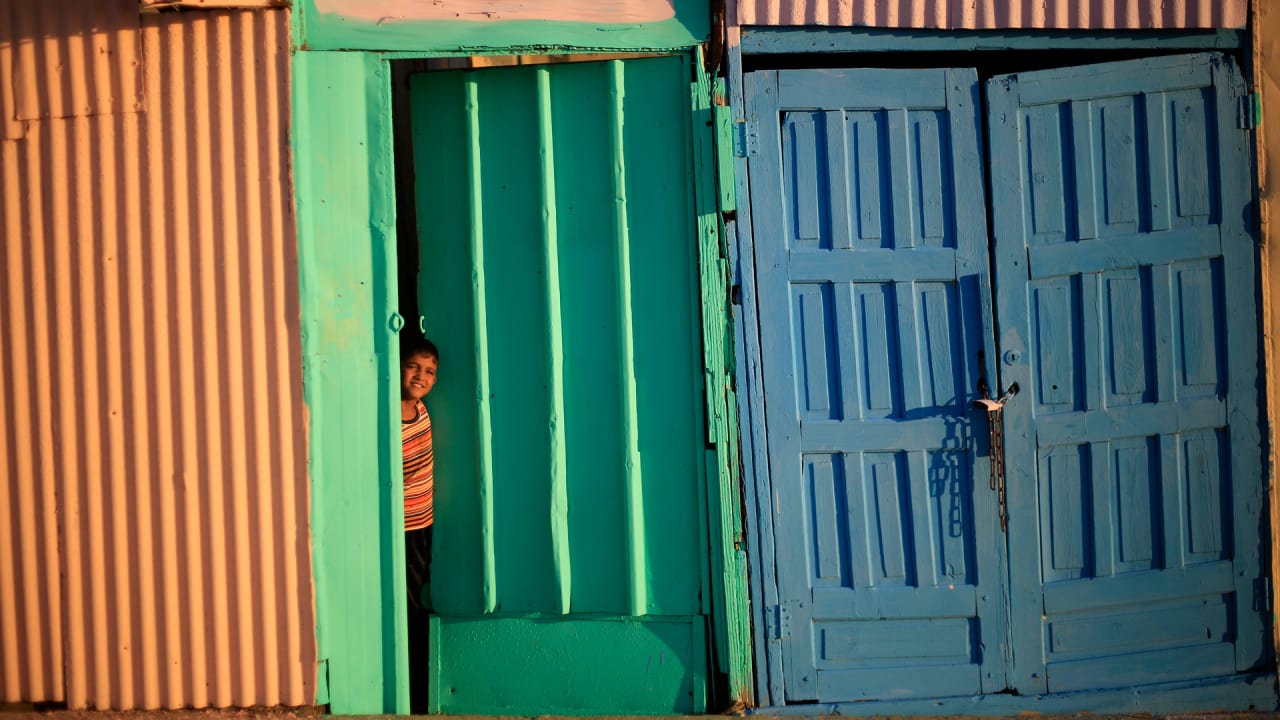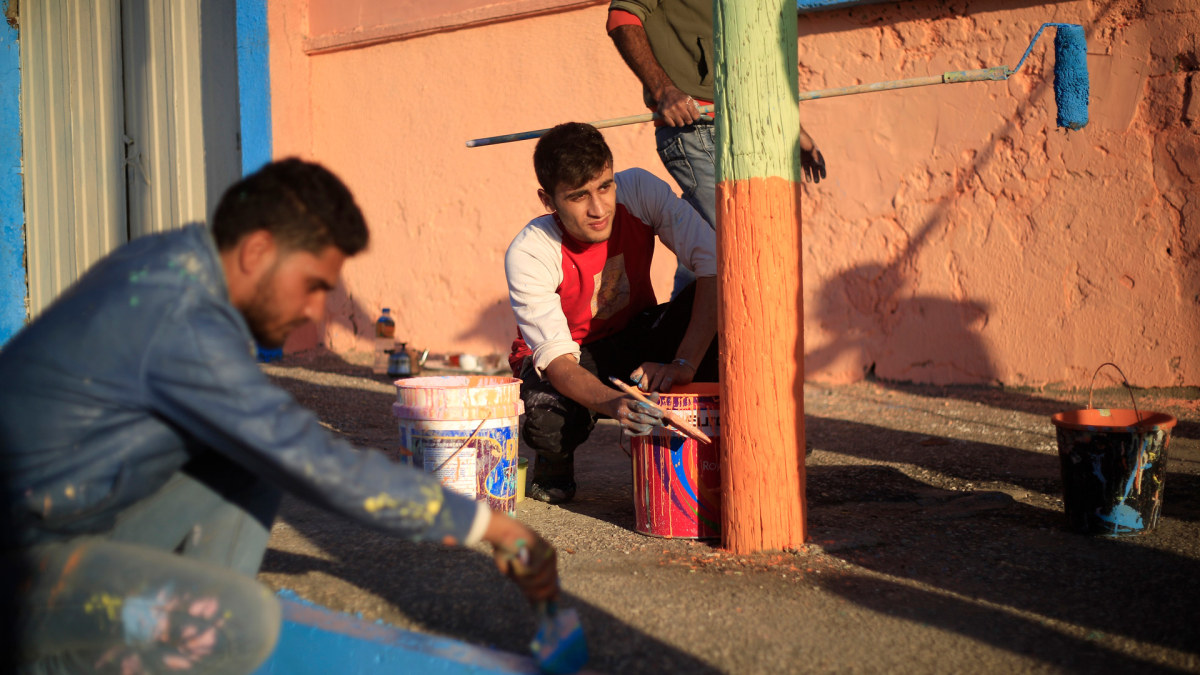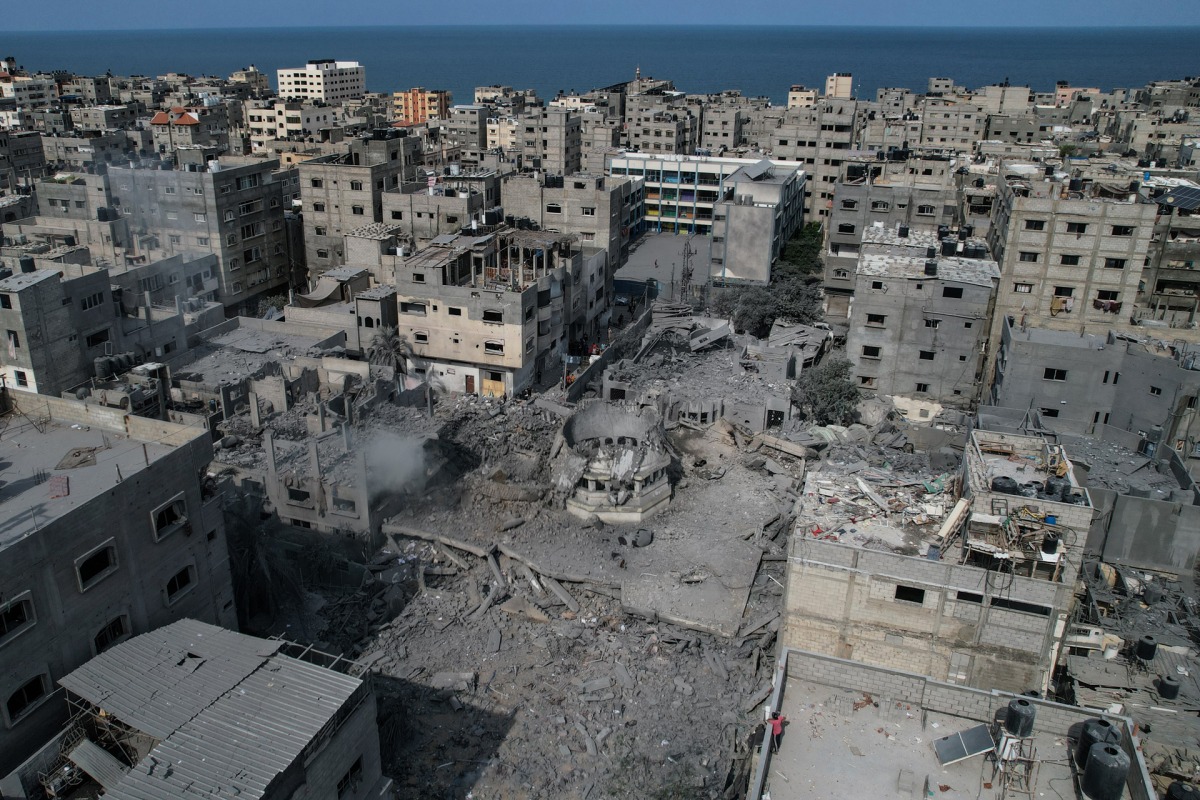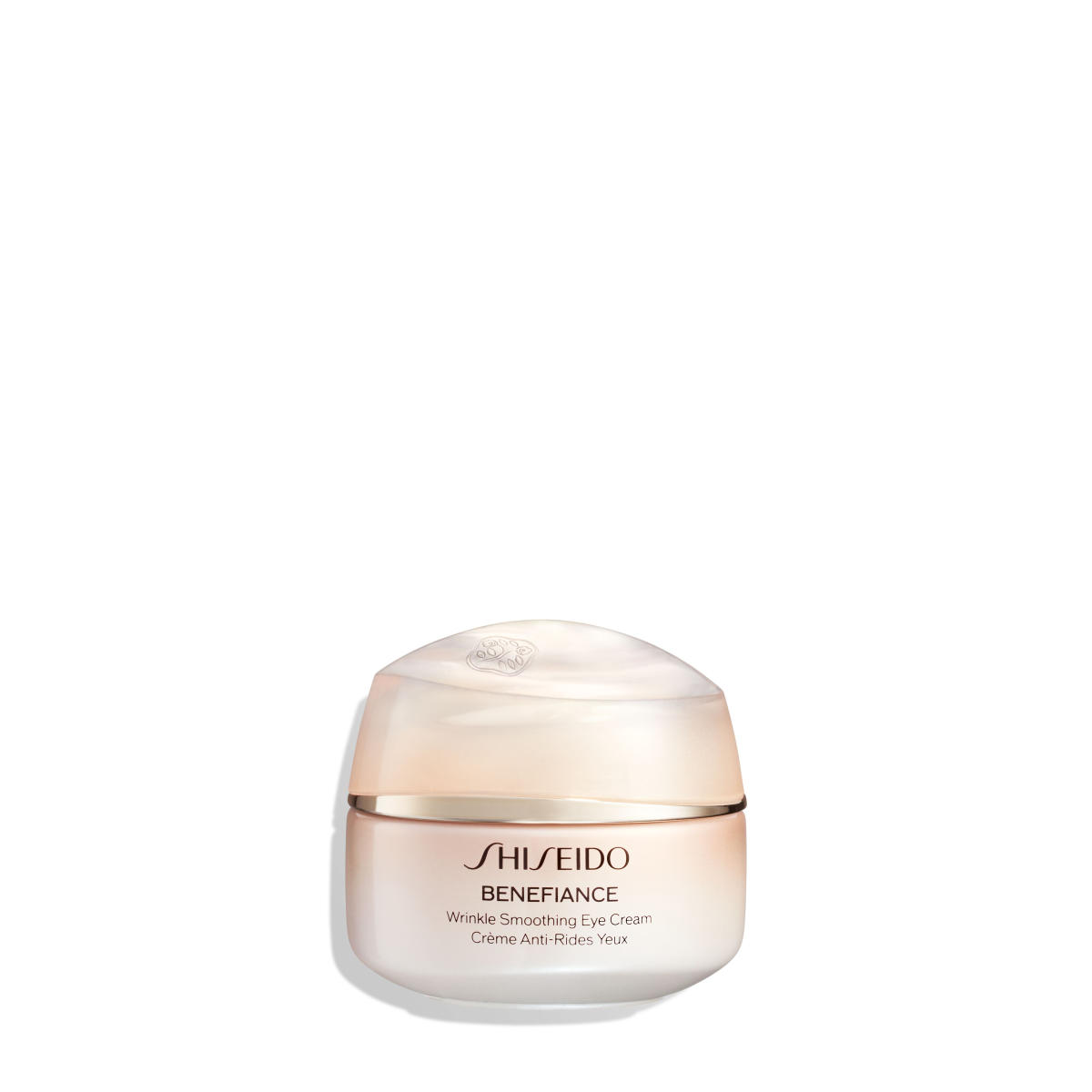Gaza residents embrace beauty amid death and destruction

Table of Contents

Palestinian artists paint buildings in the al-Shati refugee camp in Gaza City, 2015. [Photo: Mohammed Abed/AFP/Getty Images]
Celebrating anything might seem odd or even inappropriate in the face of so much devastation. However, in the research of refugees that I’ve conducted with interdisciplinary artist and scholar Devora Neumark, we’ve found that the urge to beautify one’s surroundings is widespread and profoundly beneficial—particularly so in the harrowing circumstances of loss, displacement, and danger.
When people find themselves displaced from their homes, finding or creating beauty can be just as vital as food, water, and shelter.
Gaza today
Over half crowd into some type of emergency shelter, while others squeeze into relatives’ and neighbors’ homes. Food is scarce and increasingly expensive. According to the UN, people are getting only 3% of the water they need each day. Much of the water they do have is polluted.

The rubble of the Yassin mosque, at al-Shati refugee camp in Gaza City, destroyed in an Israeli retaliatory air strike in October 2023. [Photo: Mohammed Talatene/picture alliance/Getty Images]
These needs are urgent and essential. Without them, people will die. Too many already have, while the conditions for those who live are horrific. They make it hard to see much else.
But the endless images of bombs and blood hide the story of the life, color, and creativity that existed in Gaza. And they hide the beauty that persists despite war.
Beauty is often viewed as a luxury. But this isn’t the case. It’s the opposite.
A human impulse
Beauty has been a hallmark of every human civilization. Art philosopher Arthur Danto wrote that beauty, while optional for art, is not an option for life. Neuroscientists have shown that our brains are biologically wired for beauty: The neural mechanisms that influence attention and perception have adapted to notice color, form, proportion, and pattern.

A shelter with a decorative tarp roof in Jeddah camp in Iraq [Photo: Younes Mohammad/For The Washington Post/Getty Images]
Refugees rearrange spaces to share meals, celebrate holidays, and host parties—to greet friends, hold dances, and say goodbyes. They burn incense, serve tea in decorative porcelain, and recite prayers on ornate mats. These simple acts carry profound significance, even amid challenges.
Urban studies scholars Layla Zibar, Nurhan Abujidi, and Bruno de Meulder have told the story of Um Ibrahim, a Syrian refugee. When she was pregnant, she and her husband transformed the tent they were issued at a refugee camp in the Kurdistan region of Iraq into home. They built brick walls. She planned paint colors and furniture. Around her, neighbors potted plants and set up chairs to create front porches on their temporary shelters to be able to gather with friends. They turned roads into places for celebrating special occasions. They painted a flag at the entrance of the camp.
They made a new home, but they also made it feel like it “used to in Syria.”
Creating hope in a hopeless place
The benefits of beauty are both practical and transformative, especially for refugees.
Many refugees experience trauma. All experience loss. Beautifying is a way to exert agency, grieve, and heal.
Simple acts—rearranging a home, sweeping the floor, or intentionally placing an object—allow refugees to infuse an area with their own identity and taste. They provide a way to cope when one has little control over anything else. Often, once someone is labeled a refugee, all their other identities are overshadowed or disappear.
Devora Neumark’s study of over 200 individuals who experienced forced displacement found that beautifying the home helped heal intergenerational trauma caused by forced displacement.
Neumark observed that as children participated in efforts to beautify their home, it seemed to positively influence their own coping mechanisms and well-being.
Furthermore, if children could imagine their homes prior to displacement through the stories and images shared with them—what scholar Marianne Hirsch calls “postmemories”—then the actions taken to beautify their present-day homes could be transformative. They served as a bridge connecting the past with the present and facilitated the ongoing process of healing and preserving identity.
Ultimately, making a space feel more comfortable, secure, and personalized is a tangible expression of hope for a future.
Cultivating love and life
Our Palestinian research partner, who must remain anonymous for security reasons, described that their home in the refugee camp feels like living in jail, but that they still make it a beautiful place to live.

Palestinians sit down for a meal of quail meat in a home at a refugee camp in Gaza in November 2020. [Photo: Mohammed Talatene/Picture Alliance/Getty Images]
Geographer David Marshall described how youth living in a Palestinian refugee camp used beauty to focus on the positives in their environment and dream about a future beyond their camp—and the walls that constrained their lives.
In our community-based storytelling project in a Palestinian refugee camp this past summer, we witnessed the commitment to making homes beautiful in the thriving gardens that were created within very crowded quarters. Neighbors shared how their gardens calm them, provide a place to gather with friends, and serve as a reminder of fields they once tended.
In her 2021 research, Corinne Van Emmerick, a PhD candidate in sociology, described Fatena, a Palestinian who was living in a refugee camp. She had flowers on everything—the roof, walls, and windowsills. They were expensive and needed “lots of love.” But, Fatena added, they gave her “love back.”
A form of resistance and resilience
One Guinean refugee interviewed as part of Neumark’s study said, “As refugees, we lose our sense of beauty, and when that happens, we lose our sense of everything, of life itself.”
If the opposite of this is true, then clearly beauty cannot be thought of as superficial or an afterthought. One study of Bosnian refugees found that their ability to notice beauty was a sign of improved mental health.
Creating, witnessing, and experiencing beauty offers a connection to the familiar, works to preserve cultural identity, and fosters belonging.
It’s what ensures that a little girl in Gaza not only has her birthday celebrated, but that it is also made as beautiful as possible.

A Palestinian girl celebrates in front of a house destroyed by Israeli shelling during the 2014 Gaza war. [Photo: Majdi Fathi/NurPhoto/Getty Images]
Devora Neumark, an interdisciplinary artist and researcher whose trauma-informed work explores the intersections between a home beautification and the human experience in the context of displacement, contributed to writing this article.







